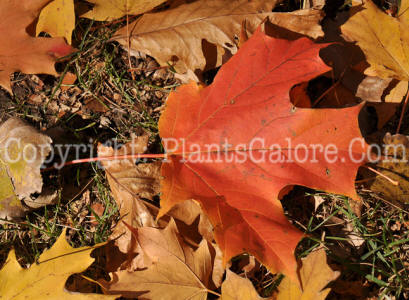|
|
 |
Acer saccharum |
 |
Sugar Maple, Rock Maple, Hard
Maple |
 |
 |
  |
3 |
 |
Eastern North America |
 |
 |
 |
Upright, with oval head, dense
and rounded. |
 |
60-75 (up to 100) feet tall with a spread of 30-60 feet |
 |
Flowers are greenish yellow,
borne in a pendulous corymb |
 |
Early April |
 |
Leaves are opposite, simple,
3-6 inches wide, 3-5 lobed, pointed, slightly
coarsely toothed, with narrow and deep sinuses. |
 |
Fall color is a brilliant
yellow to orange-red. |
 |
Buds are sharp-pointed, finely
imbricate, usually in 3 feets at the terminal, the
middle bud being twice as large as the
axillaries. |
 |
Bark is medium gray with black,
soot-like areas on the upper half of the
branches the trunk being divided into flat,
platy scales. |
 |
Fruit is a samara, 1-1˝
inches long, with the wings slightly spreading,
ripening in September |
 |
|
 |
|
|
 |
 |
- Green Mountain' - orange and scarlet
fall color and tolerates dry soils
- 'Columnare' (a.k.a. 'Newton
Sentry') - columnar form
- 'Monumentale' - no central leader and
develops a broadly vase-shaped form with
age.
-
'Newton Sentry' - main central leader,
50 feet tall, yet only
12 feet wide
-
'Glohosum' - dwarf, dense, rounded
form
- 'Temple's Upright' - Without a central leader but still
upright in habit, 50 feet tall and
in feet wide.
|
 |
 Yep,
this is the one that gives us that delicious maple syrup
for our pancakes or French toast. It is a magnificent
tree that forms harder wood than other maples and is
also about the slowest growing of the bunch too. You
can't beat the bright, Burning orange fall color either.
However, for most home landscapes, this is probably not
the tree to plant. It becomes a very large tree over the
decades that will overwhelm most urban-suburban lots.
Its root system does not like to be restricted by
sidewalks, driveways and houses and it is considered
intolerant of pollution too.
Enjoy them in the wild. |
 |
|
 |
|

